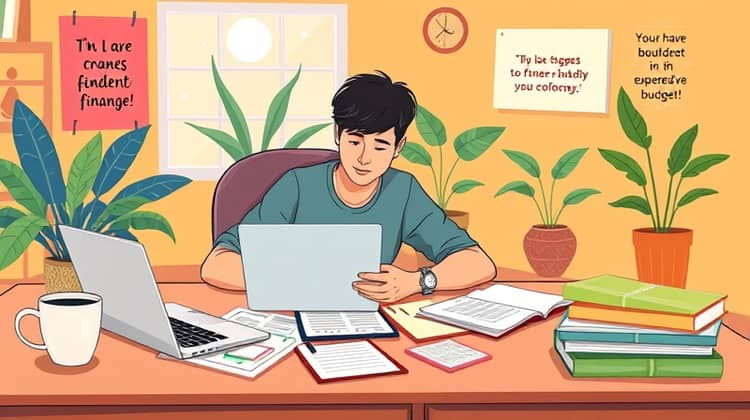Understanding personal loans is crucial for anyone looking to borrow money. They offer a straightforward way to obtain funds, whether for emergencies, consolidating debt, or financing a major purchase. However, not all loans are created equal, and many come with high-interest rates that can trap borrowers in a cycle of debt.
By being educated about personal loans and the potential pitfalls, individuals can make informed decisions that best suit their financial situations. This article will explore the ins and outs of personal loans, especially focusing on how to avoid high-interest loans and highlighting safer borrowing alternatives.
Understanding Personal Loans

A personal loan is an unsecured loan that can be used for various personal expenses, ranging from home improvements to medical bills. Unlike secured loans, you don't need to provide collateral, making personal loans an attractive option for those who may not have assets to pledge.
Personal loans typically come with a fixed interest rate and fixed repayment schedule, which makes budgeting easier. Borrowers can receive a lump sum upfront and repay it over a set period, usually with monthly installments. Understanding the terms of personal loans is essential to avoid unwanted financial strain.
- Definition of a personal loan: An unsecured borrowing option meant for personal use.
- Interest rates and terms: They can vary widely based on credit scores and lender policies.
- Repayment options: Usually fixed terms with monthly payments.
While personal loans can provide quick access to cash, they also come with certain risks. It's important to thoroughly assess the terms before signing any agreement. Knowing the details can help you avoid falling into debt traps that can arise from high repayment amounts or hidden fees.
Be proactive in your borrowing approach. Always research various lenders and compare offers to find the best deal. Understanding the fine print of personal loans can save you money and prevent financial headaches down the road.
The Risks of High-Interest Personal Loans

High-interest personal loans can seem appealing when you need cash quickly, but they carry significant risks. First and foremost, high-interest rates can lead to overwhelming debt, making it challenging to keep up with payments and leading to possible default and damage to your credit score.
Moreover, these loans can come with hidden fees that may not be apparent at first glance. Early repayment penalties, application fees, and annual fees can all add to the cost, making your loan more expensive than originally thought.
- Overwhelming debt: High-interest rates can create a mounting financial burden.
- Damage to credit score: Missing payments or defaulting can harm your credit.
- Hidden fees: Always read the fine print to uncover any extra charges.
The combination of high-interest rates and hidden fees can result in borrowers paying significantly more than the principal amount over time. This makes it crucial to assess the total cost of a loan before committing to one.
Individual circumstances may vary; what may seem doable initially could become unmanageable. Therefore, a thorough evaluation of your financial situation and repayment capabilities is essential when considering any personal loan.
How to Avoid High-Interest Personal Loans

To sidestep high-interest personal loans, begin by improving your credit score; a higher score can secure better loan terms. Consider paying down existing debt, making timely payments, and rectifying any errors on your credit report. A solid credit profile can unlock lower interest rates.
Next, shop around for loan offers before making a decision. Different lenders have varying terms, and it pays to do thorough research on interest rates and repayment conditions to find the most favorable option for you.
- Check and improve your credit score before applying for loans.
- Shop around and compare offers from multiple lenders.
- Consider negotiating loan terms with your lender.
Additionally, you might consider obtaining a co-signer with good credit, which can help secure lower rates. Being transparent with your financial situation can also aid lenders in providing you with suitable options tailored to your needs.
Lastly, prioritize working with reputable lenders who are transparent about their terms and conditions. Take the time to read reviews and ask for recommendations to ensure you’re making the right choice.
By following these steps and actively managing your financial health, you can avoid high-interest personal loans and debt traps, leading to a safer borrowing experience.
Alternative Loan Options

Before settling on a personal loan, it's worthwhile to explore alternative lending options. These alternatives might offer better interest rates or more favorable repayment terms. Many people don't consider all their options, which can put them in a precarious financial situation.
Options such as credit unions or community banks are known to provide personal loans with lower interest rates than traditional banks, making them worth considering.
- Credit unions: Often provide competitive rates and personalized service.
- Peer-to-peer lending: Connects individuals who need loans with investors looking to fund them.
- Home equity loans: Allows you to borrow against the equity in your home at a lower rate.
Additionally, government programs may offer assistance for certain personal loans aimed at specific groups or needs. Investigating these options can lead to more manageable financial solutions.
Tips for safe borrowing

Safe borrowing starts with understanding your financial situation and knowing exactly how much you can afford to borrow. Create a detailed budget that accounts for your income, expenses, and potential loan payments. This will help you determine the right loan amount without overextending yourself.
Secondly, always read the terms and conditions of any loan you're considering. Pay close attention to the interest rates, repayment terms, and any fees or penalties associated with borrowing. Being fully aware of what you're signing can save you from unexpected financial strain.
Finally, make sure you trust your lender. Research their reputation, read reviews, and ensure there are clear lines of communication if you have questions or concerns. A reputable lender will provide transparency and assistance throughout the borrowing process.
Conclusion

Avoiding high-interest personal loans is achievable with careful planning and research. By cultivating good credit and understanding the risks involved, borrowers can make informed decisions that lead to a healthier financial future.
Finally, always consider alternative options and move cautiously when borrowing. The more educated you are, the better prepared you'll be to navigate financial challenges without falling into debt traps.














